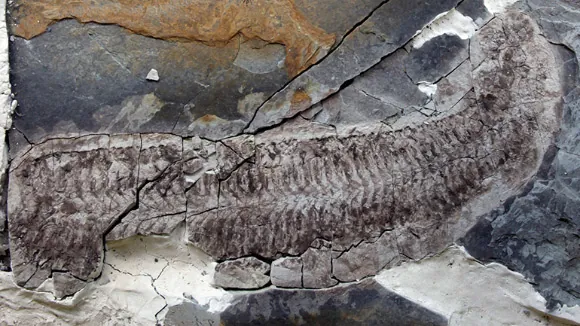
Unveiling the Secrets of Shark and Ray Diets: How Museum Collections Could Revolutionize Marine Research
2025-03-24
Author: Daniel
Groundbreaking Discovery in Marine Research
In a groundbreaking discovery that could redefine our understanding of some of the ocean's rarest species, shark scientists have realized that the answers to their questions have been hidden in plain sight – within the jaws of sharks and rays preserved in museums and private collections.
Traditional Research Methods
Traditionally, researchers rely on teeth to study the diets of different shark species, which play a crucial role in maintaining the balance of marine ecosystems. However, collecting samples from rare and critically endangered species remains a significant challenge.
Innovative Approach by Flinders University
Thankfully, researchers from Flinders University, South Australia, have found a novel way to tap into this underutilized resource. By employing a technique known as "stable isotope analysis," scientists can delve into the chemical makeup of teeth within preserved jaws.
Significant Findings
Recently published in the scientific journal *Marine Environmental Research*, this innovative approach reveals that the chemicals used to preserve shark jaws do not interfere with the isotopes. This means that these jaws can provide essential clues not only about the diet of these elusive creatures but also about their geographic feeding habits.
Expert Insights
Lead author Laura Holmes, representing the Southern Shark Ecology Group, emphasizes the significance of these findings: "The chemicals in teeth provide a narrative of what the shark has consumed and where, whether it’s sea lions in South Australia or tuna in New South Wales."
Study Overview
In collaboration with the Isotope Ratio Mass Spectrometry Laboratory at the University of Tasmania, the study examined three distinct species: cownose rays, gummy sharks, and broadnose sevengill sharks. Surprisingly, the preservation methods involving ethanol, bleach, or hydrogen peroxide did not alter the tooth structures, offering a breath of fresh air for researchers.
Potential Impact on Research
We now have the potential to access a treasure trove of samples from historical collections, both in Australia and worldwide," notes Dr. Lauren Meyer, a research associate at Flinders University. This breakthrough is particularly momentous for studying rare or threatened species where conventional tissue samples are scarce.
Exploring Historical Collections
The preserved jaws of iconic species like white sharks, tiger sharks, and makos may soon provide invaluable historical dietary insights. By utilizing archived collections dating back to the 1970s and 1980s, researchers aim to shed light on the diets of shark species grappling with modern environmental pressures.
Broader Implications
The implications of this work extend beyond sharks and rays, with potential applications in understanding the dietary habits of other marine mammals, such as orcas, sperm whales, and fur seals, for which jaw samples exist.
Future Research Directions
This study could pave the way for groundbreaking research," Dr. Meyer adds. "The ability to access this extensive range of samples allows us to explore current and historical dietary patterns and foraging behaviors of complex marine predators.
Conclusion
Published by a team of dedicated experts, the research paper titled "Isotope values from preserved elasmobranch jaws: Implications for ecological studies from existing collections" signifies a pivotal moment for marine science, opening endless possibilities for future exploration.
Final Thoughts
Stay tuned for more revelations as scientists continue to dive deeper into the mysteries of our oceans!



 Brasil (PT)
Brasil (PT)
 Canada (EN)
Canada (EN)
 Chile (ES)
Chile (ES)
 Česko (CS)
Česko (CS)
 대한민국 (KO)
대한민국 (KO)
 España (ES)
España (ES)
 France (FR)
France (FR)
 Hong Kong (EN)
Hong Kong (EN)
 Italia (IT)
Italia (IT)
 日本 (JA)
日本 (JA)
 Magyarország (HU)
Magyarország (HU)
 Norge (NO)
Norge (NO)
 Polska (PL)
Polska (PL)
 Schweiz (DE)
Schweiz (DE)
 Singapore (EN)
Singapore (EN)
 Sverige (SV)
Sverige (SV)
 Suomi (FI)
Suomi (FI)
 Türkiye (TR)
Türkiye (TR)
 الإمارات العربية المتحدة (AR)
الإمارات العربية المتحدة (AR)